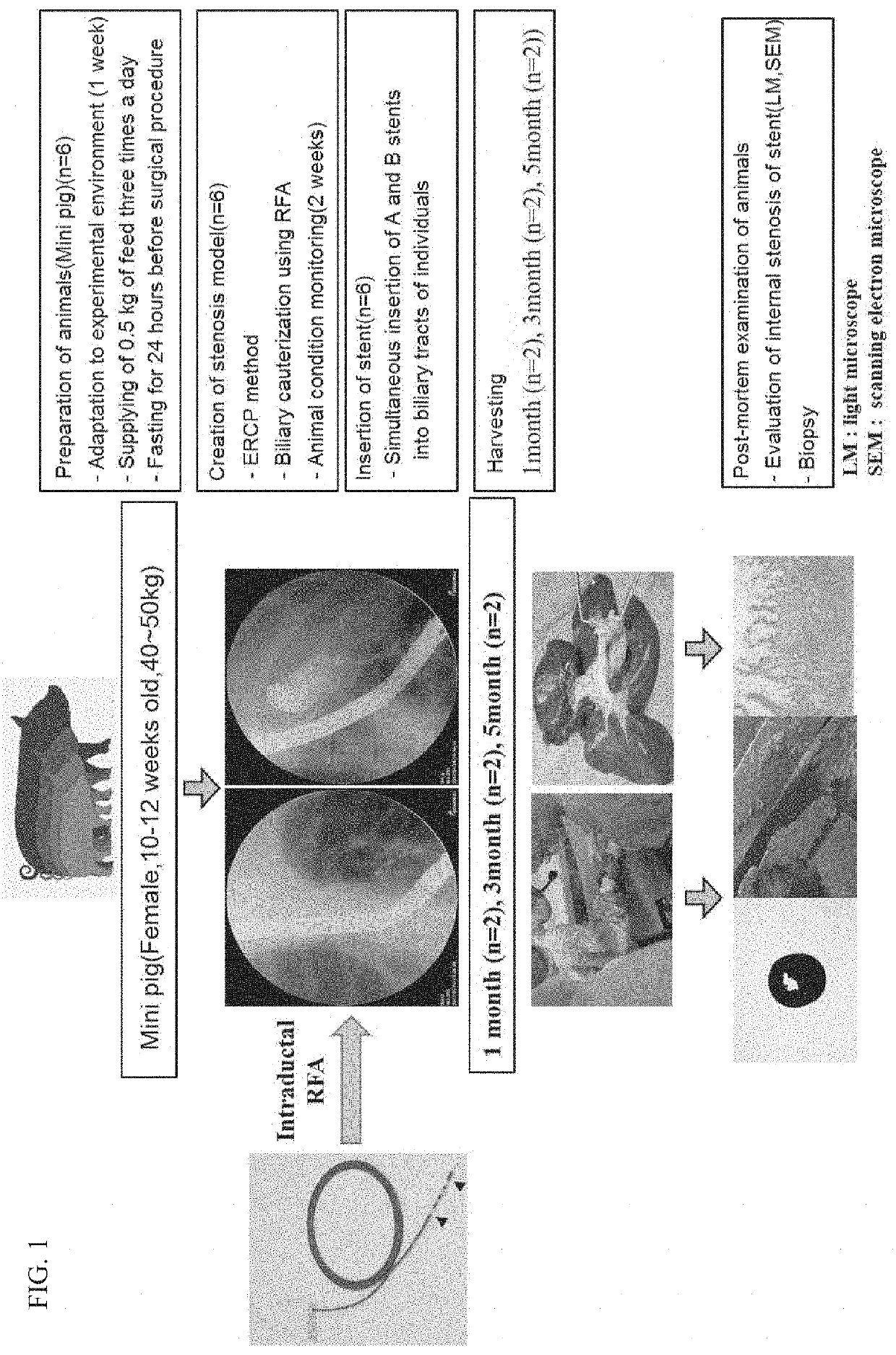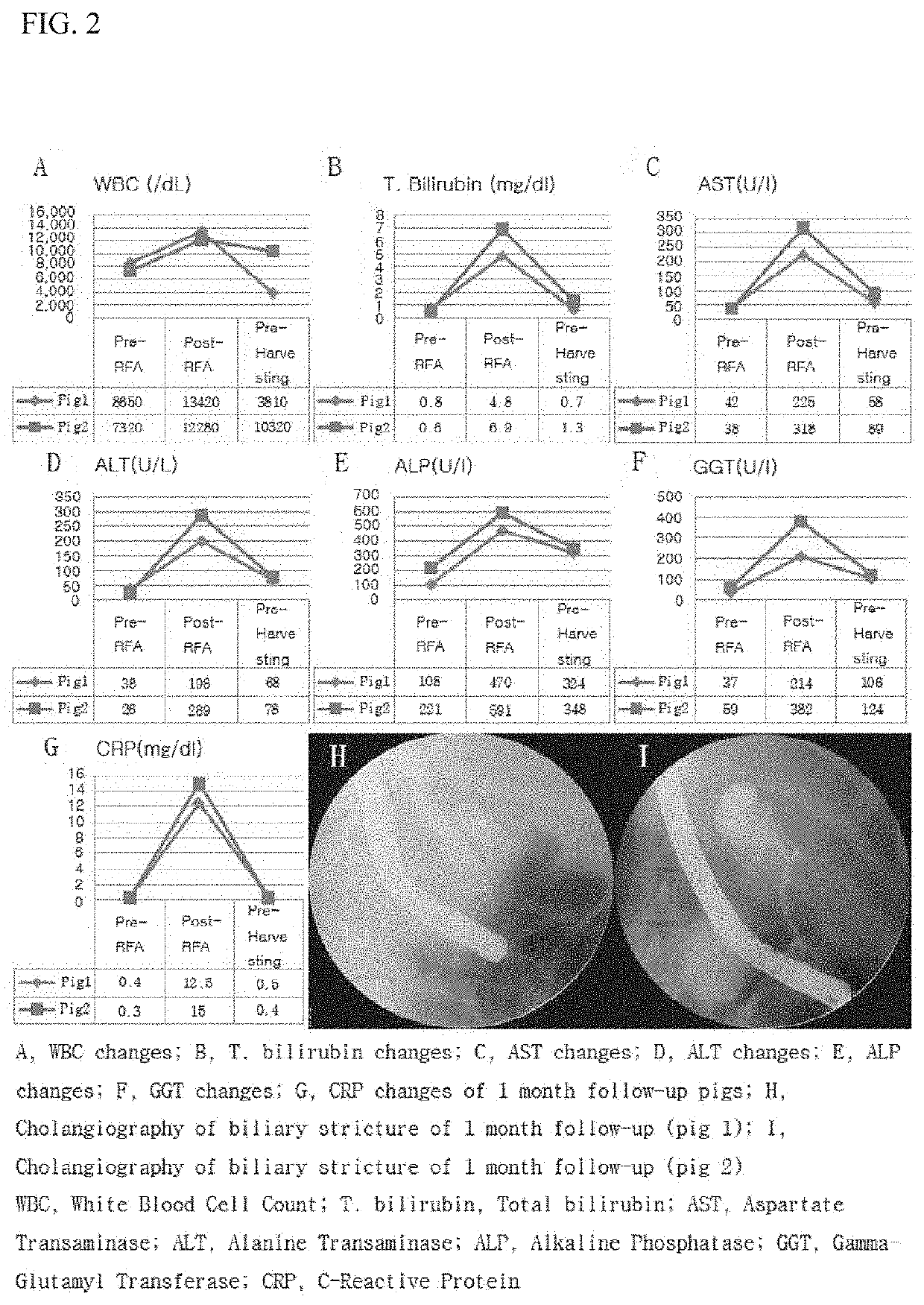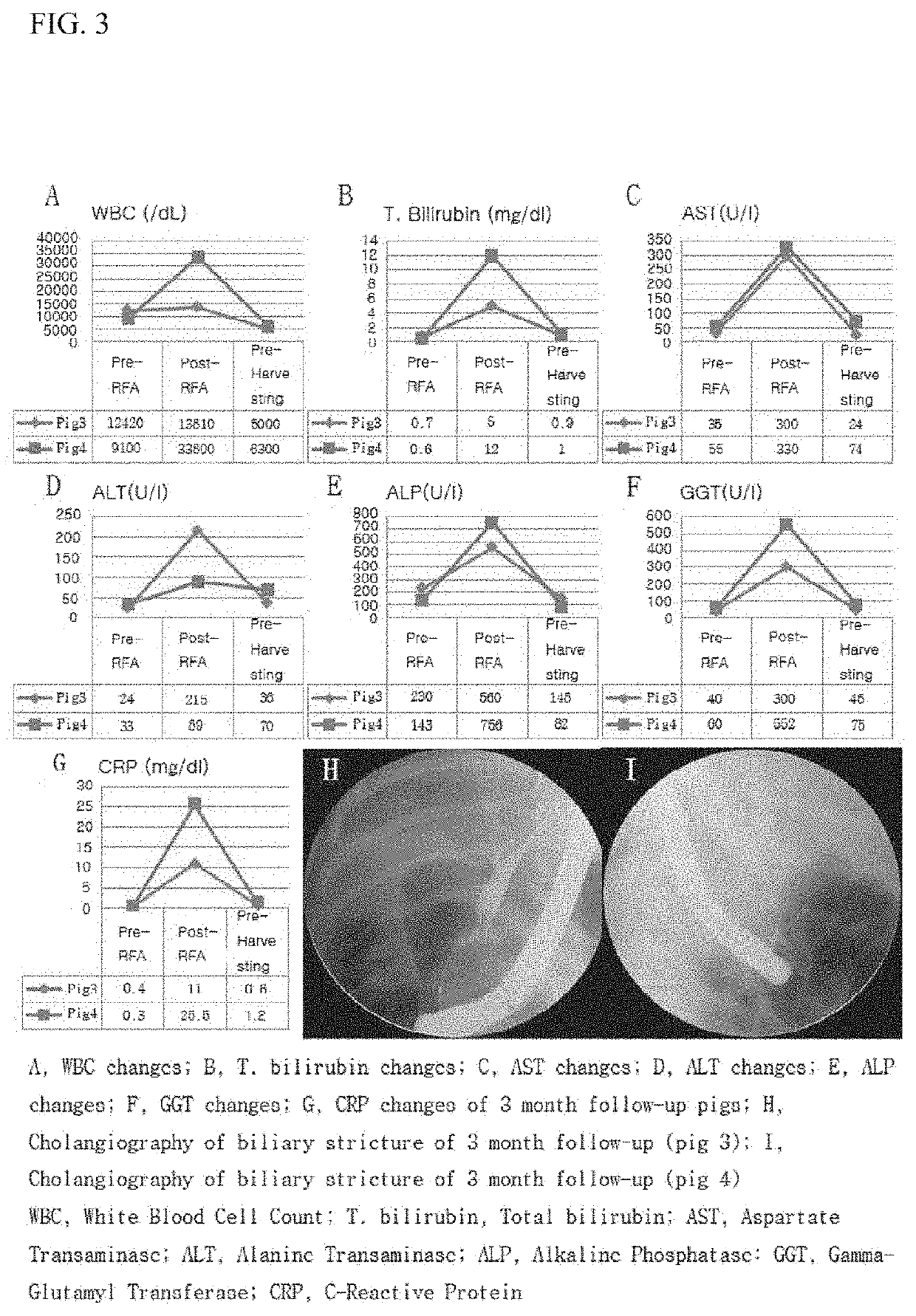Method of manufacturing plastic stent using plasma
a technology of plastic stents and plasma, which is applied in the field of plastic stents, can solve the problems of small lumen diameter, short patency period, and inability to increase the long-term drainage effect of plastic stents by changing the shape or material of plastic stents, and achieve the effect of reducing the formation of bacterial biofilm
- Summary
- Abstract
- Description
- Claims
- Application Information
AI Technical Summary
Benefits of technology
Problems solved by technology
Method used
Image
Examples
example 1
[0054]Manufacture of Plastic Stent
[0055]A central-bend-type plastic stent having a thickness of 10 Fr and a length of 90 mm was manufactured using a commercially available polyethylene (PE) material. The manufactured prototype plastic stent was subjected to a surface modification process using a vacuum plasma, thus manufacturing a hydrophilic plastic stent.
[0056]In order to form a reactive surface in a composite process using reactive treatment and plasma treatment, a polyethylene (PE) material plastic was subjected to an ultrasonic pretreatment cleaning process using 70-80% ethyl alcohol. Next, plasma pretreatment was performed with a direct discharge electrode device and a low-vacuum plasma apparatus using 40-60 kHz AC power. Oxygen gas was injected along with moisture into a chamber at 20 sccm (standard cubic centimeters per minute) while being exhausted, and the pressure in the chamber was maintained at 100 mTorr. After that, the plastic was treated with a plasma of 550 to 600 V...
experimental example 1
[0057]Measurement of Contact Angle
[0058]In order to confirm that the surface of the polyethylene plastic stent treated using a plasma was modified, water droplets were dropped onto the polyethylene plastic stent to measure a contact angle using a Krüss Drop Shape Analyzer (DSA 10, Krüss GmbH, Hamburg, Germany). The contact angle was measured using a sessile drop technique. The contact angle was smaller in the case of the polyethylene plastic stent subjected to a plasma treatment process for hydrophilic surface modification than in the case of a control polyethylene plastic stent not treated with the plasma. Further, the surface roughness of the lumen was reduced in the case of the polyethylene plastic stent treated with the plasma compared to the case of the control polyethylene plastic stent.
experimental example 2
[0059]Animal Experiment
[0060]FIG. 1 is a view schematically showing an animal experimentation process for confirming the effect of the present invention. The animal experiment was broadly divided into four steps (FIG. 2). A first step is a step of preparing experimental animals, which is a step of allowing the experimental animals to adapt to the test environment before the experiment after the experimental animals are obtained. A second step is a stenosis model formation step, which is a step of monitoring the state of the experimental animals for two weeks after biliary cauterization by an intraductal radio-frequency ablation electrode (RFA) using endoscopic retrograde cholangio-pancreatography. A third step is a step of inserting a plastic stent after confirmation of animal stenosis using a C-arm fluoroscope. In the fourth and final step of harvesting the experimental animals, two experimental animals were harvested at each of 1 month, 3 months, and 5 months.
[0061]1) Preparation ...
PUM
| Property | Measurement | Unit |
|---|---|---|
| pressure | aaaaa | aaaaa |
| length | aaaaa | aaaaa |
| weight | aaaaa | aaaaa |
Abstract
Description
Claims
Application Information
 Login to View More
Login to View More - R&D
- Intellectual Property
- Life Sciences
- Materials
- Tech Scout
- Unparalleled Data Quality
- Higher Quality Content
- 60% Fewer Hallucinations
Browse by: Latest US Patents, China's latest patents, Technical Efficacy Thesaurus, Application Domain, Technology Topic, Popular Technical Reports.
© 2025 PatSnap. All rights reserved.Legal|Privacy policy|Modern Slavery Act Transparency Statement|Sitemap|About US| Contact US: help@patsnap.com



